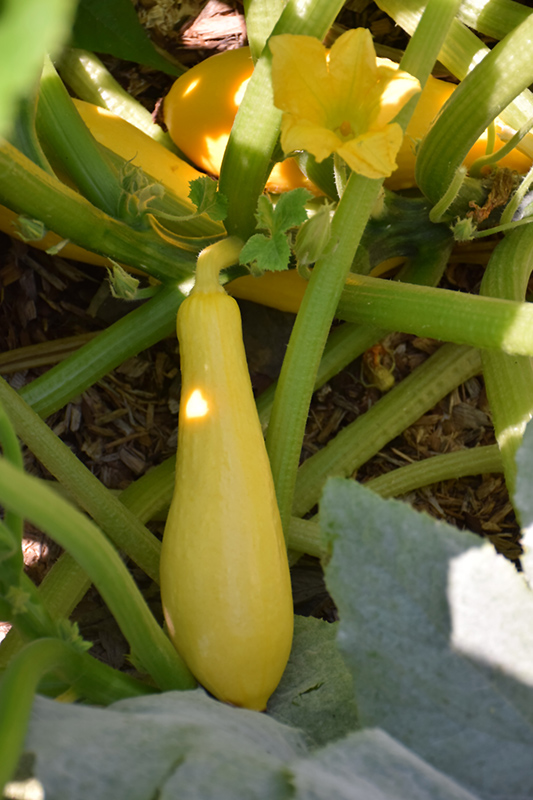Plant Library
Straightneck Squash
Cucurbita pepo var. recticollis
Height: 24 inches
Spacing: 3 feet
Sunlight:
![]()
Hardiness Zone: (annual)
Description:
A beautiful early maturing, high yielding and vigorous bush type variety; produces smooth bright yellow straight neck squashes; light sweet flavor perfect for cooking, roasting and stir fry; can be planted in succession for longer harvest
Edible Qualities
Straightneck Squash is an annual vegetable plant that is commonly grown for its edible qualities. The entire above-ground parts of the plant are edible, and can be harvested at any time in the season. The edible parts have a pleasant taste and a soft texture.
The plant is most often used in the following ways:
- Cooking
- Baking
- Freezing
Planting & Growing
Straightneck Squash will grow to be about 24 inches tall at maturity, with a spread of 3 feet. When planted in rows, individual plants should be spaced approximately 3 feet apart. This vegetable plant is an annual, which means that it will grow for one season in your garden and then die after producing a crop.
This plant is typically grown in a designated vegetable garden. It should only be grown in full sunlight. It does best in average to evenly moist conditions, but will not tolerate standing water. It is not particular as to soil pH, but grows best in rich soils. It is somewhat tolerant of urban pollution. Consider applying a thick mulch around the root zone over the growing season to conserve soil moisture. This species is not originally from North America..
Straightneck Squash is a good choice for the vegetable garden, but it is also well-suited for use in outdoor pots and containers. With its upright habit of growth, it is best suited for use as a 'thriller' in the 'spiller-thriller-filler' container combination; plant it near the center of the pot, surrounded by smaller plants and those that spill over the edges. It is even sizeable enough that it can be grown alone in a suitable container. Note that when growing plants in outdoor containers and baskets, they may require more frequent waterings than they would in the yard or garden.





